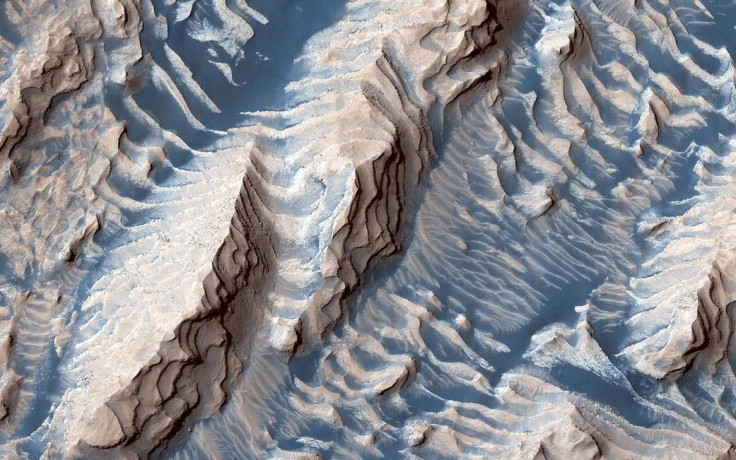NASA Photo Shows 'Elephant Fossil' On Planet Mars

Alien theorists and UFOlogists recently had a field day after discovering what looks like an elephant fossil on the surface of Planet Mars.
According to the infamous blogger Scott Waring, who runs the UFO theory website ETDatabase.com, he has stumbled upon a rock carving of an elephant head in one of the photos taken by NASA. Waring even shared that he was reluctant to share the discovery because he found it “just too odd.”
“I found this elephant head carving in a Mars photo last week and I have been thinking about it ever since. I wasn't going to tell anyone, because it was just too odd, but some of the most interesting things in life are odd. So, here we go,” Waring said.
In a video, Waring explained that the elephant carving might have been left by an ancient alien race who used to live on the Red Planet. The UFOlogist said that at first he was not so sure about what he saw but after enhancing the picture, one can clearly see some more detailed features of the “elephant head.”
“I found this head and it has a trunk like a baby elephant, except the trunk is a bit shorter. The end of the trunk has a wider opening...just like the elephants on earth. The ear is big and rounded and its forehead matches the ancient mammoth elephants here on earth more than the modern-day elephants. The eyes are bold and round, with huge brow ridges.”
Aside from the elephant head, Waring also said that he has discovered other oddities like the rock carving of what looks like a “primitive statue” of the mythological creature Bigfoot in a photo taken via the Mars Gigapan.
Waring described the statue face to be similar to that of a gorilla’s but also compared it to the face of the viral grumpy cat because of its “long slanted eyes.” Waring said that the figure he discovered is simply a statue and that it was there because it was created by alien species that once inhabited the Red Planet.
Going back to the elephant head rock formation, Waring shared that he was quite reluctant at first to share it but that it was just too odd to just be ignored. The UFOlogist’s theories, however, should be taken with a grain of salt since his claims are sometimes too fantastic to believe without solid scientific proof.
© Copyright IBTimes 2025. All rights reserved.





















